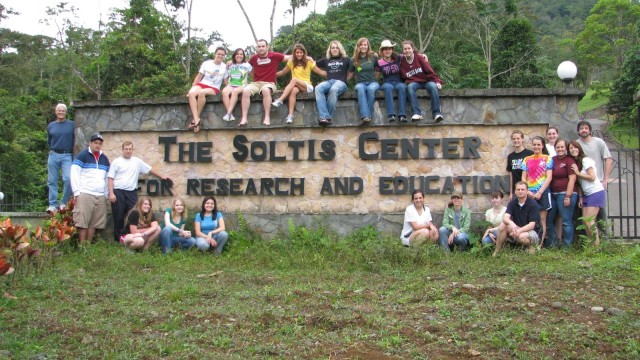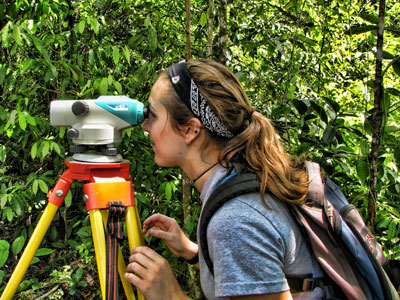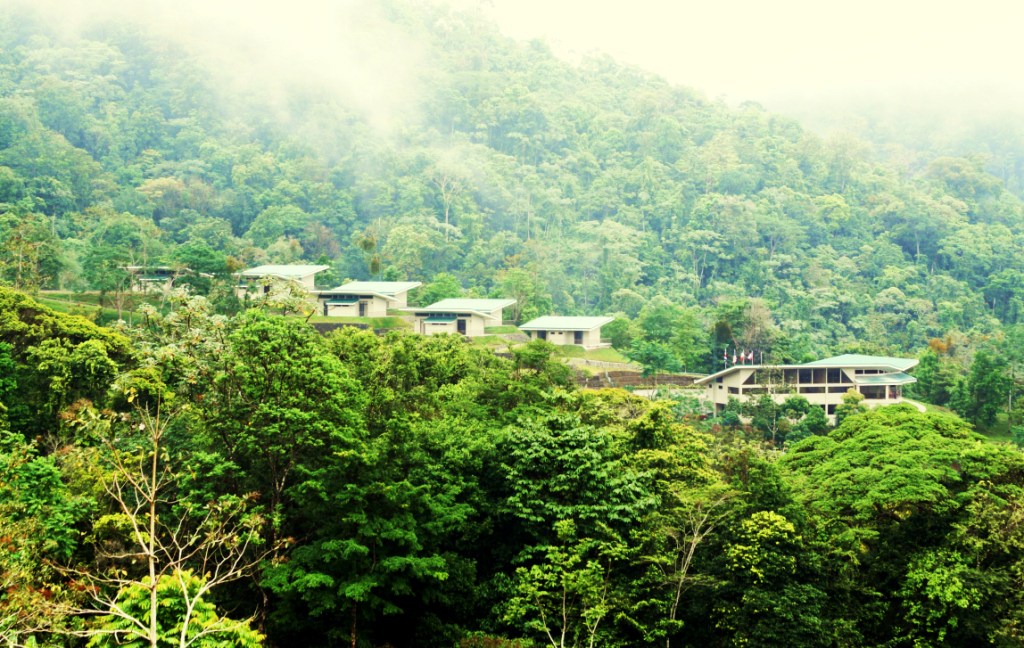Costa Rica News – Imagine spending a semester at Texas A&M walking under the lush green canopy of a rain forest.
 While there, you could hike to a hidden waterfall, and see frogs with shades of green, blue, orange or yellow. You also could study with geoscience researchers, conduct experiments in a laboratory or possibly build new facilities for school children in a nearby village.
While there, you could hike to a hidden waterfall, and see frogs with shades of green, blue, orange or yellow. You also could study with geoscience researchers, conduct experiments in a laboratory or possibly build new facilities for school children in a nearby village.
This hybrid of cultural immersion and education is part of a little-known Texas A&M experiment station called The Soltis Center for Research and Education, tucked next to the Children’s Eternal Rainforest in Costa Rica.
“The center is an open classroom/lab that offer limitless tropical forest field activities to our students and faculty,” Soltis Center Director Eugenio González wrote in an email to The Eagle. “The modern facilities and the geophysical location are unique for addressing challenging questions on global changes, such as global warming, changes in rainfall pattern distribution, etc.”
This fall, the center will host its first full-semester course, with students staying in the on-site dormitories and attending classes in custom-built and A&M design-inspired facilities. The center’s organizers said it’s the first step in expanding from short-term visits to full-term courses.
Bill Soltis, class of ’55, was looking to create an environmental research hub for Texas A&M University students when he first envisioned building The Soltis Center in San Isidro, Costa Rica. Instead, the center is an educational paradise.
“When students arrive, in addition to the exposure to the tropical rain forest conditions — rainy, humid, hot, evergreen — we also try to share with them the local culture by offering them [opportunities] to interact with locals, in addition to trying the local meals, fruits and cultural activities,” González said.
It’s that cultural interaction that really got students and more departments at Texas A&M coming to San Isidro. Kim Hammer, Soltis’ daughter and a former Texas A&M student, said she was surprised by the diversification of disciplines that have used the center for study abroad programs.
Current educational opportunities include courses in environmental design, water management, teacher training, agriculture leadership and geography mapping.
“We want to position it to be a first-rate research and study center, and we’re already on a road to doing that,” Hammer said.
An $800,000 grant was awarded by the Department of Energy to Gretchen Miller, Tony Cahill and Georgianne Moore for watershed research and an ecohydrology study at the center. Another project is funded by Earthwatch for migratory studies, and additional proposals have been submitted to Geoscientists Without Borders for a study on predicting landslides.
As a member of A&M’s International Advisory Board, Hammer serves as family liaison, managing all of her father’s property in Costa Rica. A debilitating stroke in 2009 made it difficult for her father to speak, and so Hammer said she stepped in because she was the most familiar with all the plans for the center. She also sits on an international board for the Children’s Eternal Rainforest, a 55,000-acre private reserve connected to The Soltis Center’s 250-acre spread.
During a visit to College Station earlier this month, Hammer and her father sat down with The Eagle to talk about the center’s creation and what goals still wait to be achieved.
Buying a rain forest
Soltis graduated from Texas A&M with a degree in mechanical engineering the same year he married his late wife, Wanda. Besides serving in the Army Reserves for two years after graduation, Soltis also managed three companies, mostly specializing in air conditioning filtration and clean room construction.
wife, Wanda. Besides serving in the Army Reserves for two years after graduation, Soltis also managed three companies, mostly specializing in air conditioning filtration and clean room construction.
It was business that first brought Soltis to the Central American country in 1997. Hammer said her parents immediately became enamored with Costa Rica. A year later, her father came home and declared that he was going to “buy a rainforest.”
His hyperbolic declaration equated to about 200 acres purchased with the help of Curt Clemenson, an American environmentalist who convinced Soltis to help secure a migratory corridor that would protect nearby wildlife. The more Soltis thought about the rainforest, the more he wanted to get involved with helping create a research haven for biology students. The seed for the Soltis Center was planted.
Four years later, a tumultuous process of construction on the site in a remote part of the county was complete. The result was a collection of wet and dry laboratories, housing, classrooms, computer labs, a cafeteria, Internet connections and other amenities inspired by designs by an A&M architecture student. Altogether, The Bill and Wanda Soltis Academic Center can house 56 students and faculty, and has four full-time onsite staffers, including González.
Clemenson described the center as “this little jewel that sits right in the middle of the mountain.”
Aggies at the center
Chris Houser, global faculty ambassador in the Texas A&M Office of the Provost and associate geography professor, first went to the center in 2007 before construction was completed. When the center finally opened, Houser and fellow A&M professor Steve Quiring brought the first group of students to the center as part of the National Science Foundation Research Experience for Undergraduates.
“Quiring and I saw the opportunity for a study abroad program in physical geography that allowed students to complete their laboratories in the wilds of the jungle rather than in a classroom,” Houser wrote in an email.
To date, Houser said, he has brought 70 students to The Soltis Center and plans to bring a group of 15 this summer.
A&M students and faculty are equally impressed with the facilities. But they all said that the rain forest is by far the best part of the experience.
“Besides the rocking chairs, I like to climb the 137-foot research tower (formerly at Lick Creek Park) and sit in the forest canopy listening to the sounds of the jungle or hiking to one of the secret waterfalls on the property,” Houser said.
A handful of students went to the center over spring break as part of a landscape architecture project.
Melanie Jackson, 21, said she was enthralled with Costa Rica and the center.
“The friendliness of the staff and locals, as well as the beauty of being surrounded by the life of the rain forest pretty much ensured that I was nowhere near willing to board the plane back home,” she said.
Fourth-year landscape architecture student Amanda Haney said the visit was “an experience unlinke any other.”
“Being in this environment was very inspiring. It took you away from the traditional classroom setting and allowed you to relax and engage with nature,” she said. “Students who come to the center will have these similar experiences and will bring a sense of diversity to the center with their many research topics and projects.”
Haney and Jackson said they were tasked this semester with finding ways to make the Soltis facilities more amenable to visitors. Their ideas were presented on April 11 before the Landscape Architecture Advisory Committee, as well as Hammer and her father.
“My dad and I loved their ideas!” Hammer said after the presentations. “My favorites were an outdoor classroom, a formal gateway to the jungle trails with seating and the recapturing of parking space above the doorms for recreational activities.”
Hammer said the center is seeing faculty interest in the center to help continue to grow. She also said the facilities will need help from Texas A&M to keep up with the rising demand, especially if more full-term courses are to be offered.
“We currently do not have a development officer, even though this is a fully owned and operated campus by Texas A&M, Hammer said, adding “We can’t raise any money for expansion or capital improvements.”
Hammer makes regular visits to College Station in hopes of drumming up support from other faculty and researchers who might find a use for the center. She said this fall’s full-term course is a good step. But she’d like to see more involvement across the A&M system, not just the College Station campus.
By Jordan Overturf, www.theeagle.com

